Want a successful martial arts business, but don't want to be ‘that guy'? Matt Ball talks about changing your mindset and breaking through barriers.
.
IN THIS EPISODE, YOU WILL LEARN:
- Creating a warm environment where people feel welcome
- How a student tragedy motivated a change of logo and design
- The power of a 5-week introductory program
- Why you need how you view success in order to succeed
- How managing Matt's martial arts school from an iPad in a hospital bed was a blessing in disguise
- Lessons from traveling to martial arts tournaments
- And more
*Need help growing your martial arts school? Learn More Here.
TRANSCRIPTION
It made me change my whole concept, my whole thought concept on it. You can be successful and be a good guy, what I'm doing is I'm basing my ideas of success on the wrong preset.
Hi, this is George Fourie and welcome to another episode of the Martial Arts Media Business podcast, episode number 28. I have another awesome guest with me today, who is Matthew Ball from SMAC and SMAC stand for Somerville Martial Arts Center, which is where Matthew is from of course. And we talk about the word SMAC and the possible negative connotation it has to it, but I guess more importantly, the whole change that they went through in branding, from being a hardcore fighter type image, with skulls and skulls on the car and everything and transitioning that to a friendlier, family environment, and how they had to go by changing their branding, their public image. And it’s something that caused them to double their business, in a short span of only two years.
So we talk about that, it was a really fun conversation, especially before and after, but we kept in all the good bits for you. And we also talk about Matthew's first management episode, where he was actually forced to manage, because he was in the hospital on his back, and that was the first time he actually had the whole bird's' eye view about his business and was able to manage it better from that perspective. And we also had some deep discussions about association with success, internal blocks that you might have that don't allow you to succeed, that you almost self-sabotage yourself every time you get to this point of success, because you don't want to be associated with being that guy, that successful guy that everybody hates, and how Matthew had to fight that, work through that to change his association of what it means to be successful and helping others.
Now, I want to jump into a theme that's been happening and I've been talking about it in the last few episodes and it’s all tying together and it’s something I keep on talking about, because it’s something that works, and this is event based marketing. And the more I talk about it, the more I explore it, the more I discover. And the more answers I get and the more I'm doing campaigns for martial arts schools, the more I'm learning about the psychology of why things work and why they may not work and we adjust.
Look: marketing is definitely a journey. We as an agency, we have some great wins right off the bat, and we help clients and they get a flood of new students, and then sometimes we don't. Sometimes we're doing the exact same campaign on just two different pages or two different locations, but the results are vastly different and it just proves a point: that there's no one size fits all with marketing. Your audience could be different, your interaction with your audience could be different, your relationship could be different, the competition you have is different, the type of people could be different – so different messages resonate with different people and how do you get past that? Well, you've got to commit to the journey and the journey means testing.
Testing your marketing strategies, keeping track of what works and what doesn't, because if you can eliminate what's not working, you're getting one step ahead of what is working. And that's where the whole Pareto principle, the 80-20 concept just speaks volumes in direct response type marketing because 20% of your efforts will generate 80% of your results. It’s finding out what that 20% is and that's the journey, that's where the real work is. Look: everybody can put up advertising and do that kind of stuff, but when it’s not working, you've got to know where to find the problem and where to diagnose and how to solve that problem.
So, that's gone a bit off topic on what I wanted to say, but it’s a very important thing that I've been experiencing over the last few weeks. And going a bit further and something that we really spoke about with Matthew is the event based type marketing. I’m not going to give a spoiler, he'll explain the whole process and concept. And after the episode, I will give a few insights, on how I'm seeing the objections and things that come up when we do campaigns and how this psychology really applies to it, so look out for that.
I’m going to jump right into that now. As always: you can find the transcripts and links and everything about this episode on martialartsmedia.com/28, the number 28 and that's it from me for now, I want to get straight into this interview, so please welcome to the show Matthew Ball.
GEORGE: Good day everyone, today I have with me Matt, or Matthew Ball, one of the two.
MATT: Matt Ball is fine.
GEORGE: Matt Ball from SMAC, which stands for…?
MATT: The Somerville Martial Arts Centre.
GEORGE: The Somerville Martial Arts Centre, all right. We're just going to be chatting about a few things, travel within the martial arts industry, a few recent successes and so forth. So – welcome to the show!
MATT: Thank you very much, thanks for coming down and speaking to me.
GEORGE: Awesome. So I guess we're going to start from the beginning – so. Who is Matt Ball?
MATT: I started in the Bob Jones martial arts group, in zen do kai when I was about 13 and I'm now 44. I've continued within the Bob Jones martial arts school throughout that time. In 1996, I decided to go full time and entered into a couple of business writing competitions for the two previous years, Shell corporation and the Rotary club used to do business comps. And it was a really great way to be mentored, it was my first experience with mentors outside of martial arts, that helped me develop my business plans to the point where I thought that I could possibly be successful stepping away from my job, which was in a bank at that stage.
So in 1996, I moved out and my main aim was to teach at high schools during the day and then at night time to run my classes, so from 4:00 till 8:30 at night each day. I had a lot of promises from schools in that first year that they would employ me for the following year, and it looked really great on my business plan. And then when I started calling them up, they informed me that I had to have been booked in a year previously for some of them and it was all requirements and that first year was a little bit rougher than I first anticipated.
But once we got through that, that business really took off and in the end, before I sold that part of my business, we were teaching it around about 40 high schools each year, there was 5 or 6 people working for me to assist in that, mainly teaching self-defence, but also some Muay Thai and some boxing for fitness type classes and things as well. So it was good and then, and now we're in 2017 – around about 2003, I moved into a full-time premise. We were at the time operating out of three different halls, within the same area, all within the 5K radius of each other.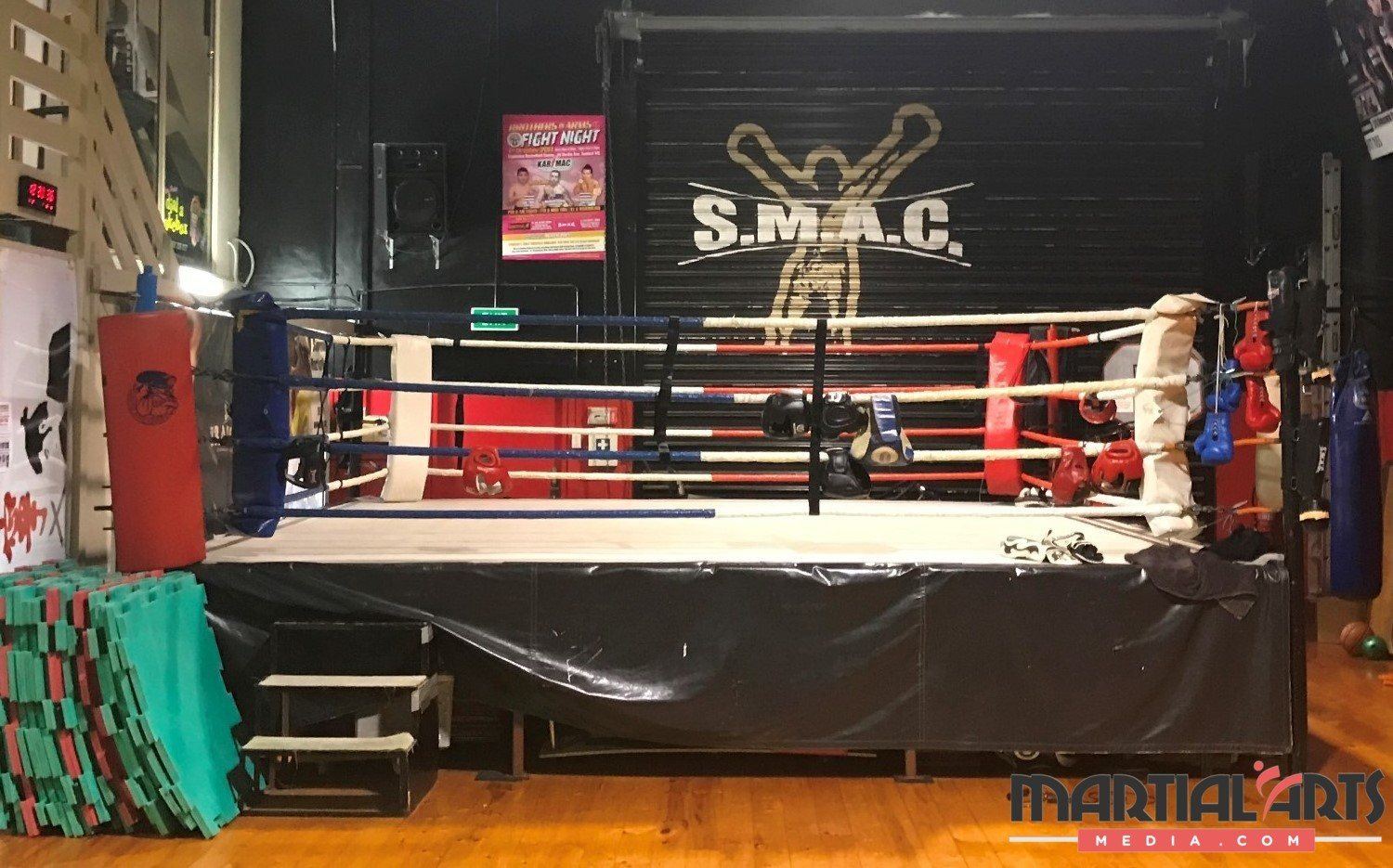 So I decided to take the big leap and try and bring it all into the one place and I felt that I had enough members at that point to do that. So I've been teaching children and obviously adults for a long time, but I decided I want to focus more on the adult and team market at that stage and we dropped right into competition, room fighting for boxing and Muay Thai predominantly. So we went into trying to develop that sort of market, so the imagery that I chose and the logos I chose were turned directly towards that market and we probably left the child market a little bit behind.
So I decided to take the big leap and try and bring it all into the one place and I felt that I had enough members at that point to do that. So I've been teaching children and obviously adults for a long time, but I decided I want to focus more on the adult and team market at that stage and we dropped right into competition, room fighting for boxing and Muay Thai predominantly. So we went into trying to develop that sort of market, so the imagery that I chose and the logos I chose were turned directly towards that market and we probably left the child market a little bit behind.
And at first I was happy to do that, that was my goal, but after some time, I realized I'd probably swung too far the other way. And we had Dave Kovar from America at our club and I was talking about our member base. And at the time, it wasn't massive, but it was close to 200, around 170 members and 80% was over the age of 15. And he said, Matt, that's great, most people would love to have adult numbers like that, but you do realize that you can still have a lot of kids and still keep those adult members as well? And I went, yeah, I'm an idiot.
So at that time, we sort of changed our logos, we changed around our gym a little bit. People, when they used to walk in, the first thing they would see would be a boxing ring, and then another boxing ring. Often people would be fighting and sparring and the kids have to walk through it. On our wall, we had the Krav Maga gear, so it all looked military, knives and guns and things. And it was amazing when Dave said it to me, I walked outside, I walked back in, and I went, who would bring their kid here?
And then I walked in further and I went, if I was a guy walking in here, I wouldn't feel comfortable training. It was intimidating. I was more surprised that we managed to have as many members as we did in that sort of environment. So even though we really worked hard at being a really encompassing gym and friendly and everything, the facade didn't show that, so that was my first big lesson.
GEORGE: So, backtrack a bit: there was a few question in there. So, you were teaching at multiple schools at the time?
MATT: Yeah, that's right.
GEORGE: Was it a challenge, did you lose members, moving them all to one location?
MATT: I think because we were in such a small area anyways, it ran about a 5K radius, we didn't really lose any members. We probably lost some members, because the fees had to change, the fee structure had to change slightly. So even though we offered them more classes, that isn't what everyone wanted and because our overheads have gone up a little bit, we had to increase it. But the members, by and large, were amazing. The first couple of months of being here, it was half building site – half Dojo, or training gym.
We had the wooden floor finished on the first weekend and that was done by 10-12 members turning up and helping me construct. And then we had to sort of section bits off, and over the months, we could slowly get more of the gym operating and cleaner. And rather than losing members, I think that it actually made us really strong at that period, because everyone had some ownership over the place. Even if they weren't working on it, they were a part of that journey of, let’s do something special together. And it really put a really good community feel, that probably lasted for 5-6 years before the next group sort of came through and didn't know anything about that part.
GEORGE: Well, you did a great job on the environment and I’ll put little pictures with the podcast here, but it’s really got this Melbourne feel. Anybody that's been to Melbourne, there's always graffiti and posters stuck up. And just that in the contrast with the wooden floor, it almost looks like you're in an antique coffee shop almost. Something else is happening here other than the gym, obviously because it’s empty as well, there are no people.
MATT: Yeah, we find that most people when they come in here who have trained at other places will remark on the feel. They'll actually come back out now, whereas, before it was a bit intimidating, they'll come back out to me and actually grab me and say, man, it just feels so comfortable here! I don't know quite how we've done it; I can't say that it was all purposeful. Some of it was, but some of it was being just by osmosis. But yeah, when you hear people who train come up to you and say how they just feel comfortable in your space and how they love it, it’s a really special feeling, it’s great.
GEORGE: Definitely. Now, let’s go back to the transition, because if you were this hardcore fight gym. And Somerville Martial Arts Centre also shortens to the acronym of SMAC, so I can imagine initially when you had the branding, you mentioned earlier the skulls and things, it was really for the hardcore fighting market as such. And then, with the acronym of SMAC, it really goes with that. But now you've changed the branding and you've changed the image that you can accommodate for the appearance, but you've still got SMAC on the T-shirts and so forth?
MATT: A part of it is age as well. When we moved here, 13 years ago, I was just in my early thirties. Maybe just 30, and I was training with fighters intensely, so all that is inside you and you want to express that part of you and what better way to express it than on a really big building and all over your car and that's the thing: I probably got caught up in the moment and in my age again. And without any professional help from marketers or anything, because there wasn't a lot of money and I think as a martial artist, we tend to think we can do everything on our own – I quickly learned that's not the best way to do it, but that's a whole other story.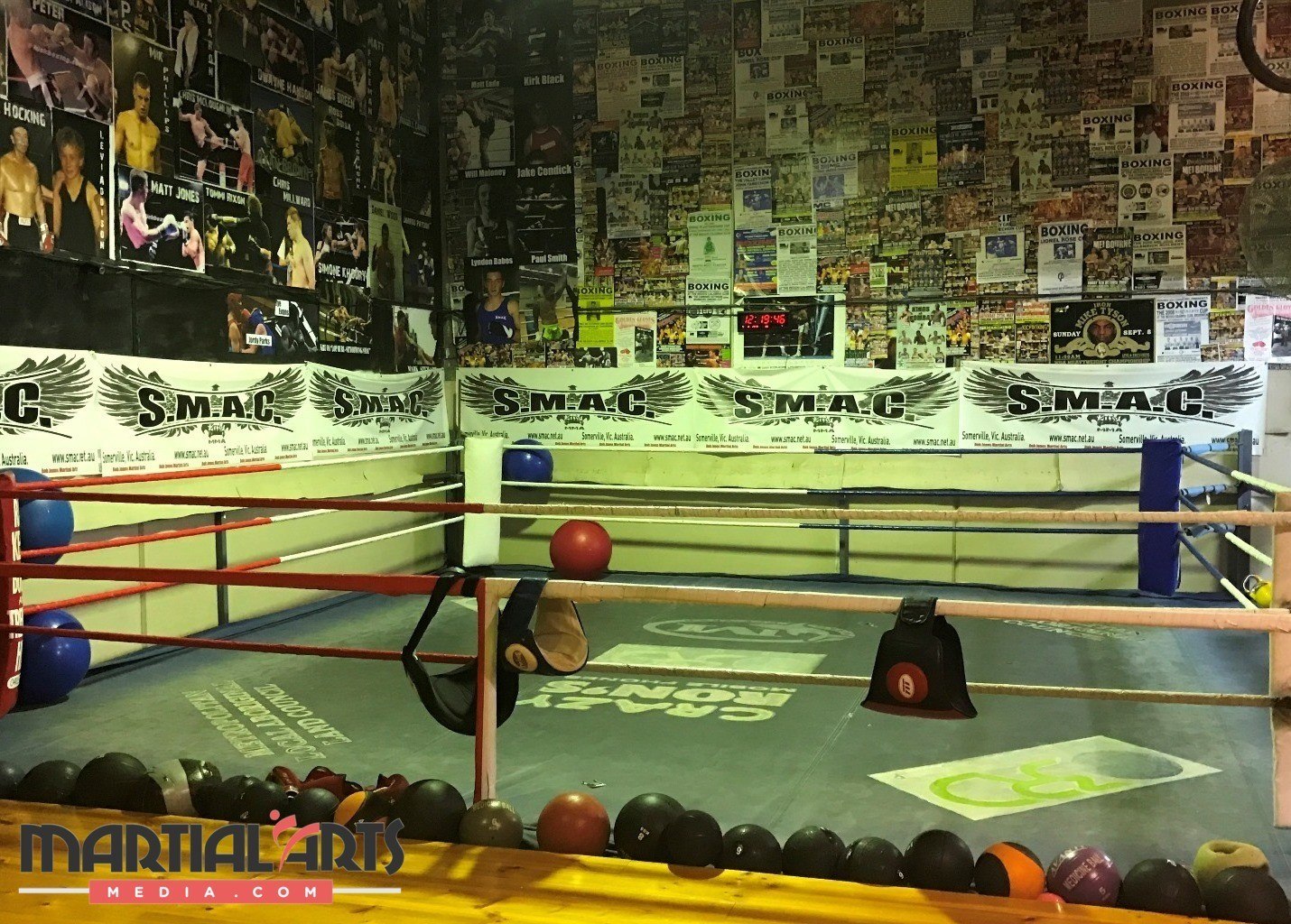 So that whole feel that we came into was pretty hardcore and like I said, that was actually a purposeful thing. I wanted to aim for that market. Part of the reason I wanted a full-time center because I wanted a ring that we could use all the time. I wanted hanging bags that we could use. Just trying to train people in a hall for a competition – it can be done for sure, but it’s not easy. You can't have people coming outside of work times to get extra training in, and not getting that experience of being in a ring and they’re just not getting the hours of punishment on the bags that you sort of need for that internal discipline that they develop from it.
So that whole feel that we came into was pretty hardcore and like I said, that was actually a purposeful thing. I wanted to aim for that market. Part of the reason I wanted a full-time center because I wanted a ring that we could use all the time. I wanted hanging bags that we could use. Just trying to train people in a hall for a competition – it can be done for sure, but it’s not easy. You can't have people coming outside of work times to get extra training in, and not getting that experience of being in a ring and they’re just not getting the hours of punishment on the bags that you sort of need for that internal discipline that they develop from it.
Not only power and strength, but more that discipline of keeping them going, when they really don't want to be doing it anymore. Yeah, we set that up and my first car that I had when I moved in was a Mazda 6 or something, so it didn't look too bad. Then I got an Alpha Romeo, a little sports type car and I had stickers like several skulls and fading in the background it almost looked like a biking emblem, not an Alpha Romeo. And what I realized pretty quickly, I gave it two years, was that I just alienated the whole new family market. The families that were with us loved us still because the teaching hadn't changed, but we weren't attracting any new families.
When the realization came to me, what am I doing, and this isn't who I am. I’m not that aggressive, nasty guy. I don't look like a bikey or anything, so it was a confusing image I was giving to people, the juxtapositions were too far apart. So yeah, changing the logo – we actually changed the logo using a tragedy that we had. We had one of our young guys commit suicide, who was working full time at the center and was also competing at quite a good level in fights and he met a girl overseas and the relationship had gone south and he, unfortunately, committed suicide. And one of his friends created an image using a boxing image that everyone put on their cars and stickers and things like that from his friend at work and stuff.
So about two or three years after that tragedy was when I was looking for the new logo. And I was trying to be careful, I didn't want to idolize what he'd done, I didn't want other people to feel that that's a good way to get recognized, but also in my heart, I wanted to remember him and I felt that the logo captured what we were going for. So we changed it to a circle with the image of a boxer, someone in a victory stance in the center of it. We came up with a motto of “Commit to excellence” and put a name on it and I feel it’s a much friendlier, much more encompassing. It encompasses not only boxing and Muay Thai, but it also encompasses our martial arts and that striving for excellence.
So I think that the image is more about that. The trouble with running a gym where you teach multiple martial arts is trying to find an image that encompasses them all, and that's been one of my hardest things. So now when I advertise, we advertise each martial art we do separately, even from kinder kids to kids’ karate, we advertise separately and on separate websites and on separate social media advertising, so we can really target the groups. But the umbrella brand is still SMAC and that's still the name at the front of the gym. But the first contact people have with the marketing will be very much just that style that they're looking at like I said, kids' karate or adults' karate, or the Muay Thai kickboxing, will really associate to that. And that's worked really well and I'm hoping that that way of structuring the branding can continue to work as effectively as it has.
GEORGE: I'm kind of just thinking about it because it’s something that I've noticed a lot and I think it’s a difficult thing to do because you've got all these different target markets. You've got this fighting group, and then you've got the mom for the kid, and then maybe that adult that just wants to release stress after work. So you've got to have these different conversations. Like I always saw it, what is in the focus: is the focus actually just one level up and then the value of “Commit to excellence” and that your motto is really, all your emphasis goes back to the value, instead of the actual art that's being used to achieve the same result?
MATT: I think that there's definitely a part of it. The “Commit to excellence,” not only can I use for that idea of, it’s not going to matter what you come into, we’re going to help you achieve: it also helps me every day. So when I get a little bit lazy or my discipline lacks: for instance, we iron on patches onto our kids’ GIs and a couple of parents were saying, oh, they're peeling off. And I said, we usually just iron it on and then you can stitch it on later on. But then I thought: I've got a sewing machine here – why am I not just sewing them on? It’s not that time consuming for me to do and if I'm committed to excellence, I'm committed to excellence.
So the motto is not only for the students, but it’s also for me. But going back to what you're saying about attracting people is, yeah, I found the most successful clubs that appear as financially successful clubs just focus on one style. And I can understand the desire to do that and if I was saying to someone who wanted to set up a gym, what should I do, that is the line that I would say they should do – but it’s not what I like to do. So what I understand is the best thing to do isn't what I want to do. So this is where this breaking it down really came into its own and it’s really helped, it’s one of the measures that's taken us from about 10 years of staying at 170 members to right at the moment of 540 active members.
And it’s happened over two years and when I said, OK, I'm going to have a separate website for everyone – and they're really just landing pages, basic information about what we do, how to join and just the information on that class and what sort of person it suits. Now when someone rings, most people that ring have an idea of something that they want to do, but probably about 30% don't – they're just, I want to do something. So then we talk about the general benefits of martial arts, but then we try and find out what sort of person they are: are they someone that likes to spend time trying to perfect something before they move on, or are they the sort of person that just likes to keep doing it and as they make mistakes, they'll just try to correct them as they go.
So if they're the sort of person, I just like to get going, man, I don't want to spend time planning stuff out – if I'm talking about an adult, I’ll say that Muay Thai will probably be the best one for you to start in, because we keep it pretty quick, the techniques require skill at a higher level, but they're fast to learn for you to feel like you're getting somewhere. If they're the sort of person that says, I like to plan things out, I like to try and perfect a skill or a technique, I’ll practice it over and over until I get it right, I'm a bit of a perfectionist, well then, zen do kai would be the direction I would take those people in.
With the boxing, it’s more often someone will ask about boxing, but they'll say, I don't like kicking, or I haven't got a good stretch, I don't want to move my legs around much, I just want to get into it – what we often find is, once we get people in here, they see the other classes going on, and we’ll probably get 15% who will change around, because the thing we did put them in wasn't the right one, so they'll move on. We've found the best way of doing that is, we've actually been running 5-week beginner programs.
So we find that the 5 weeks gives us a really good time for them to commit, so we know they're serious. So no free classes, they join the 5-week program, they get the uniform or the gloves, so they're set up from the start, and by the end of those 5 weeks, they have a really good understanding of what's going on. They're only stuck with other beginners, so the class is just set up just for them, they're not involved in the whole class, they're not trying to catch up, they're not trying to learn as things are racing too far ahead, the instructor’s not having to divide his time between them and the higher level people.
So we found that that gives them a really good grounding. Then they come into our classes after 5 weeks, like someone used to be after 13 weeks, because they've just been out of getting that basic work is done, so they feel better about it, we feel better about it and they've had a real good chance to see if martial arts is for them, without having to invest a massive amount, but enough to know if they are serious, not just, I'm going to come in and try a class because I'm bored this week.
GEORGE: That's interesting. We do a lot of the whole paid trial type system, and there's a lot of approaches to it: a couple of weeks training, maybe only a few classes, for the purpose obviously, because you obviously want the conversion at the end. It’s interesting that you go that whole dynamic of 5 weeks because you can get a real true assessment. Do you find at the end of 5 weeks that some people they are suited, so they're going to continue this one style, or that you determined that they need to be in a different style, or that you shift them around? MATT: I would say it would only be about 15-20% that at the end of it, we would direct them to another style. So for instance, we’d have someone – and it mainly happens in our boxing group, because our training’s all amateur boxing for competition training. So even though we know that only a small percentage of the group will ever compete, we train everyone as though they're getting ready for competition. A lot of people, because boxing is the in word, come in to do a fitness boxing group and even though we explain that that's not what it is and we actually have a fitness boxing class, most people still cannot understand, until someone is punching back at them, so even though in that 5 weeks they won’t spar, but they'll still do drills, we call them stick and move drills, so where they'll get jabbed at and parried off and move around, so they're getting used to it.
MATT: I would say it would only be about 15-20% that at the end of it, we would direct them to another style. So for instance, we’d have someone – and it mainly happens in our boxing group, because our training’s all amateur boxing for competition training. So even though we know that only a small percentage of the group will ever compete, we train everyone as though they're getting ready for competition. A lot of people, because boxing is the in word, come in to do a fitness boxing group and even though we explain that that's not what it is and we actually have a fitness boxing class, most people still cannot understand, until someone is punching back at them, so even though in that 5 weeks they won’t spar, but they'll still do drills, we call them stick and move drills, so where they'll get jabbed at and parried off and move around, so they're getting used to it.
So what we tend to find is that at the end of 5 weeks, we’ll have a few of those people going, I liked it all except, I don't like the sparing, I'm not into that – is there something else I can do? So then fitness boxing might be the thing. Or even we’re finding, often the older guys that feel that way, they think they want to do it, but then they go: I'm 45 or 50 – do I really want to get hit by a 20-year-old? It’s a really good question to ask because I don't think it’s a good thing either. We've found those guys are going into the Krav Maga and same with some of the ladies and it’s been a great release for them, because they're still getting to work hard with someone, they're still getting to push each other around, they're throwing strikes with real force, but it’s in a much safer environment, it’s not in that sparing environment where it’s quite random, it’s more set.
And they'll actually probably end up training harder in the Krav, but it’s a much better fit for them. So that's probably the main one we find that switch and change. With the kids, it’s a little bit between kickboxing and karate, we find that mom felt that their child was this sort of child, but he's actually probably more this sort of child, and he's bored within 2 seconds when we’re talking about breath and balance and stance. But man, you get him hitting a bag, he’ll do it 400 times without wanting to stop. We’re probably a bit more shuffling in that class.
But overall, we find that what they start is probably what they continue to stay in. We have very few that don't finish the 5 weeks, but we don't capture everyone at the end of the 5 weeks. So at the end of the 5 weeks, we have probably about 30% who will say to us, I absolutely loved doing the 5 weeks, but I'm not ready to commit for a longer period of time. So I'm not sure if that's in our sales pitch that we’re getting that wrong, if we’re getting it wrong in our follow up, or if people are just buying it as a 5-week package: man, I’d love to do Krav Maga for 5 weeks and get some basic self-defence: I wouldn't mind doing 5 weeks of boxing, I've never tried it before – and that doesn't matter to us, because we're still making money out of them.
It’s still not a wasted lead for us, they're leaving saying that they loved it, so they're going to tell someone else about is and it hasn't cost us anything. We’re charging $90 for the 5 weeks and they get a set of gloves, which we can get wholesale on a good price, or they get a uniform, again, which we can get at a pretty good price. So by the time I take advertising fees, our instructor fees and the gift that they get, we’re still making a little bit, not much, $10 a student, it averages out at $9-$10, so it’s not much out of the 5 weeks. But then if I can capture 70% of those people to continue on their training, that's when we obviously start to make a bit of the return.
GEORGE: Going back to, because you mentioned that over the last two years your business has doubled and how the changing in branding played a big role in that: what else contributed to that big growth?
MATT: We had a number of things: working with Dave Kovar, release some stuff within me that have been holding me back I think. I found that most of the mentors I worked with up until that point when it came to trying to be financially successful, or successful in a business, it came down to finance. And it came down to, no one ever really said about trying to rip people off, but it always sort of had that feel in the end: lock them in on this, once they're here, never let them leave. It had that feel like, it didn't matter what they're getting out of it, you've got to keep them. And it didn't sit right with me, I don't like that. I don't like being involved in that when it’s happening to me, and I don't like doing it to other people.
So I always felt like there was something stopping me from being successful, because I'm thinking, well, to be successful, I've got to be like them, and I'm not going to be that. So I'm just going to coast along where I'm at. And then, doing the work with Dave and meeting him and seeing the sort of person he was and then going over to America and meeting his team, because I went, this is all really good, but does it really work this way? You know when you're learning off someone and you go, yeah I can get up and say how it should be, but how is it really?
GEORGE: Do you practice what you preach?
MATT: Yeah, do you practice what you preach. And are your guys following the steps that you've put in the process for them, or are they doing something else, and you're out here talking, but they're working something else. So I went over there and watched his club a couple of nights and got to meet him properly, have a relaxed talk and meet all his staff at all the different levels, from the person that does the intros, to the girls and guys at the desk, to the people instructing classes – man, it was impressive. The skills of his students were still good, it wasn't like Mickey Mouse nothing, it was good students.
The instructors were incredible instructors, I don't just mean physically, but they knew what they were doing, and they were young, but he trained them so well. The office staff, everyone, and they all worked as a team, there was no, oh, don't talk to her, or, he doesn't really know what he's doing, you should come and speak to me. They were talking each other up, everything just felt good about it, so it made me change my whole thought concept on it: you can be successful and be a good guy. What I'm doing is, I'm basing my ideas of success on the wrong preset. So that was probably the biggest hurdle. Once I got over that, I was happy to then go back to graphing my student numbers and charting everything. So when I first started…
GEORGE: Can I just stop you there on that? So, the big obstacle you had was your association with success?
MATT: Yes, for sure. And I still find it in other things too. I have done some work, I'm trying to get rid of it, I was seeing a psychologist for a couple of years to help work on that as well and I found that my time with the psychologist was amazing. It was like a business coach at the entry level because it was what I needed at the time. I didn't need work on my finances, and putting my plans into place – what I needed was, one of the hurdles, you've been doing this for a long time now: why are you still bumping up against these same hurdles? And with a psychologist, you get no answers, but it allows you to question yourself on different levels and things and I found that to be fantastic.
My Systema instructor, Alex Kostic, I've been training with him for around 10 years and he's from Serbia and he's studied psychology and he's always talking about how people should go and see a psych. We want to get fitter, so we go see a PT, or we do a martial art. We want to think better, but we don't speak to the professionals on how to do it, we want to deal with our situations in a better way. And it took me about 7 years of him constantly talking to me about it, but when I finally went to see the psychologist, I could go in there thinking, I'm not going here because I've got a problem that needs to be solved, or a mental problem that I'm dealing with: I just wonder how it can be better.
And that was another big breakthrough for me. Maybe turning 40, got me a few breakthroughs. So those couple of things helped me get over those big hurdles, put me back in the mindset of growth and development and then I could put that same mindset back into the business and I could put it back into my martial arts training and how I want to continue to grow. So those things, and then the other things that really helped us grow, a few of our instructors sort of came of age, they got to the point where they were doing really good work and you could really trust them with classes, so then we were able to grow the classes and develop more times and spaces.
Again, that came to me actually giving them feedback and again, it came from a slight tragedy: I had a bad thing with my back, I blew out a few discs and had some badly pinched nerves and was stuck on the ground for about four months before I could get surgery. And it meant that I was managing the gym with my iPad, so watching the classes through the security camera and sending messages on, can we do this, can you do that, when you teach the class tonight, the guy at the front is a little bit messy, clean that up.
And for the first time ever, I was actually managing the staff and managing the instructors and giving them really clear guidelines. So what would normally happen was, I’d turn up, they'd come in to help me with the class and I’d say, take the blue belts. What? No, no, just take them. Or such and such has got a fight coming up, go and work with him, and no real clear instruction, no good feedback. But being stuck on the ground for three months…
GEORGE: Blessing in disguise.
MATT: It was the best thing. It sounds horrible, but it was the best thing ever. Made up Facebook groups working communicators, groups for instructors, smaller groups, and then when I got back, we would talk before class on what they were going to do, I’d give them some other ideas to help with the ideas they had, at the end of the class, we’d give feedback on how the class went and we try to keep that going. So it’s now 2.5 years later, so all these things, they've all accumulated, but that learning to manage properly was a God sent, you know? Being stuck on the ground.
GEORGE: That's some really deep stuff there, I mean, you say just those few things, but just that – yes, you're removed from the gym, but now you actually had the bird's eye view, you can actually see what's going on because you're not in it, so you've removed yourself. And then the mind stuff, I mean, this is something I work on all the time, and I've got my own philosophies about it, but my belief this stuff comes from the way you grow up, the way your parents talk to you about money, that’s expensive, this is this, you can't have this, the whole tall poppy syndrome thing that’s alive and well in Australia – as soon as there's success, let’s pull him down, that whole crab in a bucket thing.
And I think all those things – you talking about, and I’ll re-listen to this, but it was kind of in the sense of, I was doing everything the same, and then I changed my mindset and my thinking and my obstacles, and then everything else changed. And it’s almost like it’s just that internal change, your beliefs. I guess your relationship with money and how you link success because you had this vision, these guys, they're a bit dodgy, they're trying to be sneaky and a bit on the scum side to kind of lock people in and keep their money. And your values just don't agree with that and that’s your only model of success and then, you're kind of like, I'm definitely not going to be that, I don't want to be that guy.
MATT: That's right, and if you haven't got those role models to look up to, it’s hard to create your own role model. But you know, with you talking, well how much difference can one person make? It took a lot of people for it to happen to me, but I was the only person in the end that needed to change for all the other things to change, and then it’s changed for everyone in the gym too, for the better as well. Now there are more people involved in martial arts, so they're getting the benefits of that as well. I had an interesting discussion with one of my higher ranks and we were talking about direction and things. And I was talking about the need for growth and he was dead set against the need for growth, he was telling me that that was a narrow way to be looking at some of the things or at martial arts development.
And I found that it was a little bit of a shock and a little bit hurtful too because the growth is about getting other people to experience what I think is absolutely an amazing journey and has been so helpful for me, that I want other people to be a part of it. His mindset is still in, he's thinking success is what I was thinking success was as a martial artist. And he's thinking that when I'm talking about growth, I'm talking about salesmen and ripping people off or something. It’s like, he needs that paradigm shift to say, that's not what I'm meaning: what I'm meaning is, getting people to love it, getting people involved in it. Giving them what we've had and what we've enjoyed for 30-40 years.
GEORGE: I’m on a completely different level than you are. I started martial arts in my mid-thirties and I can tell you, it changed my life, I know that. Why didn't somebody sell me, 10, 20, 15 years ago, why didn't someone put their foot down and tell me, you need this! This will put you on the right path, you know what I mean?
MATT: A 100%.
GEORGE: There's so much value in martial arts. And you don't want to go down the route of being slimy and locking people in and doing all this funny stuff…
MATT: But you need to get the word out there!
GEORGE: But at the end of the day, you've got to experience it. And if it’s going to change your life, I think martial arts school owners need to do whatever they can to install that message and get people over that obstacle, over those fears that are holding them back of actually just getting started and just get them started. MATT: The third biggest thing that helped change our whole number system around is part of that 5-week program, it was that we then had a date to advertise to. So rather than just advertising for new members all the time, which ended up never happening. So I'll get some flyers out, or I'll put something in the paper, or I'll put something on Facebook – well, there's no date to have to do it by, you know? But when I know that I'm starting my next course on March the 6th and I haven't got anyone in there yet, I know that I've got to be advertising to March the 6th. And there no use me advertising kickboxing if that course is zen do kai.
MATT: The third biggest thing that helped change our whole number system around is part of that 5-week program, it was that we then had a date to advertise to. So rather than just advertising for new members all the time, which ended up never happening. So I'll get some flyers out, or I'll put something in the paper, or I'll put something on Facebook – well, there's no date to have to do it by, you know? But when I know that I'm starting my next course on March the 6th and I haven't got anyone in there yet, I know that I've got to be advertising to March the 6th. And there no use me advertising kickboxing if that course is zen do kai.
So I'm only going to advertise zen do kai for that group to get in on March the 6th. So it’s made me invest money in my advertising, it’s made me look at how the advertising campaigns work, it’s made me look at the results of the advertising campaign because they're very obvious. I don't just go at the end of the year; how many people did we have this year? It’s more like, well, how many people did I get to join u that month? Six. OK, so next time we do it, we got 8, what did we do differently? Or next time we do it, it was three – yeah, but it was the middle of winter and most people… so we can start to really look at things for having that date I have to have it done by, and that was another…
GEORGE: I'm so glad you mentioned that because I've spoken about it a few times and I spoke earlier to Darryl Thornton from Shukokai Karate and we were talking about events and deadlines and he just had a huge open day where he signed up 70 people and it was an hour! And there were so many people in the hour, and then 19 came back on Monday. And we were talking about this whole psychology: it’s not 5 hours, where people can come and go when they please. It’s one hour, where they get to spend their one hour of energy. They can only be there 12 to 1, that's the hour and they do something very simple, they run their event, everybody gets to take part, it’s the pride of the school, it’s what all the students are looking up to, they just want to do this one thing…
MATT: It’s coming again!
GEORGE: Yes, we want to do the open day! And they do one offer at the end and it’s not high pressure or anything, but this is the offer for the day and the whole psychology goes back to exactly what we were just talking about, this whole event for your marketing, that it’s not, people can just walk in when they please and join. You can only join in this window; this is when the offer is.
MATT: And we find that people actually appreciate it. Sure, we’ll get a percentage that won’t appreciate it, but the most, when we explain it to them, the reason why we have everyone start on this date is because we find in the past people just needed time to tag along, it’s not a great learning experience. But if we can really sell to them: in this beginners’ program, we go step by step, you're only with other beginners, the instructor can concentrate on you guys and really give you a good platform base –man, I want to do it!
When I'm telling other people about it, I’m going, I wish I started like that. My first class, I got winded five times. I started in stretch jeans and had to do squats with someone on my shoulders. Why did I keep coming back? I have no idea, but I don't need to give that same experience to someone else, I can give them a much better experience than what my first experience was.
GEORGE: That's awesome. I've got one more question for you, because I know you do a lot of traveling and so you've got a lot of people on board, within the fight arena and the fight scene – what's been your biggest learning curves, from traveling abroad with martial arts and the fight shows and so forth?
MATT: I think the biggest learning curve, there's probably been two. The first one is probably just a funny one, but a lot of guys don't do much for themselves and you learn that when you go away with them, and they ask how they're going to get their underpants cleaned, every little thing – oh my God, this guy has gone from mom to his wife, and there's been nothing in between. The girls are much better, the girls tend to be self-sufficient, but the guys can be pretty hopeless, so you end up being a bit of an everything to them on those trips. But the main thing I've found is that martial artists are martial artists.
When I first started traveling, I was really quite nervous going into another gym, or a studio, or a seminar, because you didn't know what quite was to be expected, and you were representative of everyone from your system – you're not, but you felt that. You sort of go, if I'm the only guy these guys will ever meet from our system and I'm an idiot, if I don't do well, then it’s not going to look good on my whole system. What I've found is, if you just get in there and have a go and laugh with them a bit and enjoy the session, everyone takes you under their wing and then because you've got something in common, they want to show you around, they want to take you out for dinner. They will help you get to places that you would never get to when you travel.
So most of my trips, a vast majority of my trips are around martial arts. So it’s either learning or further competitions stuff. With the competition stuff, the main thing that I've found is that Australia is way up there on our levels of professionalism in the way that we were in or shows and competitions, but also on our levels of competitors. And I've also found that, particularly in the Muay Thai, that everyone's there to help each other, so we’re in the change rooms – there's no animosity generally in the change rooms. It’s generally very, very friendly. If I've traveled away and I haven't been able to bring a bucket because there was no room, someone in the change room is going to give me a bucket.
The last fights, we were at world title fights, on a line fight, we were stuck in a place called Connecticut, we were in the Indian reserve in the middle of nowhere – apparently, it’s the biggest casino in America under one roof, but that didn't mean much. There was no way to buy anything, the next town was 40 minutes away, we had no cars. Guys helped us out with pretty much everything, even down to adrenaline for stopping cuts, which we needed. So yeah, I find that martial artists in general, through my vast experience with them, the vast majority are decent, good people. Sure, there's going to be that guy that wants to test you a little bit more, that's had a bad day, but that's everywhere. That's in the supermarket, or in my own club from time to time, but man, I just love traveling and meeting martial artists, it’s just the best thing ever.
GEORGE: Awesome. Matthew, that was awesome.
MATT: Thank you very much.
GEORGE: Glad to have you on this show and maybe we’re going to have you do around two for the fight stuff and chat a bit more about that.
MATT: Thanks very much for letting me talk and I've been loving all the podcasts. I've learned so much off all the different people you've had on. In fact, some of the ideas that helped turn me around are from different martial arts podcasts and things that I've listened to.
GEORGE: That's excellent. And before we go, if people want to find out more about you, where should they go?
MATT: They could have a look at www.smac.net.au.
GEORGE: smac.net.au.
MATT: Yep.
GEORGE: All right, awesome. Cool, thanks, Matthew, cheers!
And there you have it – thank you, Matthew, for a great interview, it was good fun. Learned a lot, like always and touching back on what I mentioned about event based marketing: if you look at the whole psychology of that, just putting a dead end to the purchase, the big thing with martial arts is the long term commitment and people fear long-term commitment, it’s just something that you've got to process. And as I spoke with Paul Veldman about the different stages of the conversion: somebody comes in for the paid trial, that's that. Now there's a whole new conversation because there's a whole new state of mind and there’s a whole new person really, because they've experienced what martial arts can do for them, or not.
That conversation is going to be completely different and you've got to think of it as these little baby steps that are climbing up this ladder to get to the ultimate conversion at the end of the day. And the psychology of putting that whole deadline in place, there's a lot of things here: there's the psychology of the deadline again – I know I repeat myself often, but the deadline of, it’s a 5-week program, so people know that that's what they're committing to, 5 weeks, and it’s actually nice for a student knowing that, hey I can actually sign up to this, and in 5 weeks, I've accomplished something.
In my mind, I can feel that I've done something worthwhile, and this comes back to an objection that I see coming up with the whole paid trial system, is a lot of people say that, even though the paid trial is so good, they don't want to disappoint their child, because they don't want to put the child through this whole process of enjoying the martial arts journey and now the parent has got to say, sorry, we just can’t do it, we can't afford it, it’s not going to work. And having that deadline, having that package deal with someone – maybe you don't even have to do anything different: what Matthew does is put something in a 5-week program and if you can package it as in something that really delivers a result that people aren't scared to commit, because they know for the 5 weeks, they're going to walk away with something and certain skills, that is a great way to frame things.
And look, obviously your intention is to keep them as a long term member, but removing that fear, that risk, that risk of commitment, risk reversal – we talk about it a lot in our copywriting stuff, risk reversal: how can you remove the risk completely and take on the risk, the risk is all on you as the school owner. So how can you do that, how can you take all the risk, eliminate it all from the person that's contemplating whether martial arts is going to work for them or not? So remove all barriers, make it easy for people, get them on the floor, get them trying things out and then into the next step of the conversion.
Alright, that's it from me, just a few insights, a few things that I've come up with. For next week, we've got another awesome interview for you and that's it. Show notes and all links and everything are on martialartsmedia.com/28 and I will speak to you next week. Have a good week, chat soon – cheers!
*Need help growing your martial arts school? Learn More Here.
Enjoyed the show? Get more martial arts business tips when you subscribe on iTunes for iPhone or Stitcher Radio for Android devices.


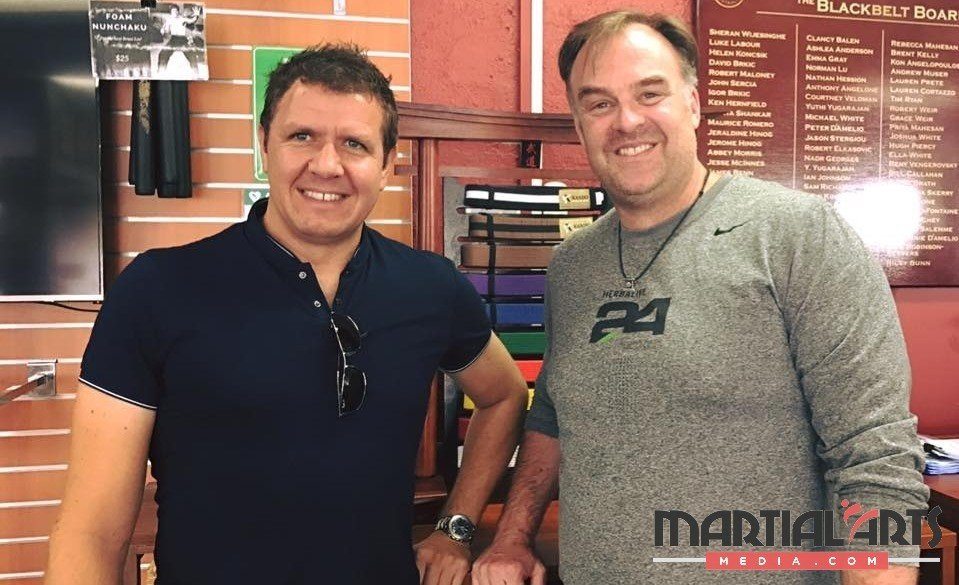

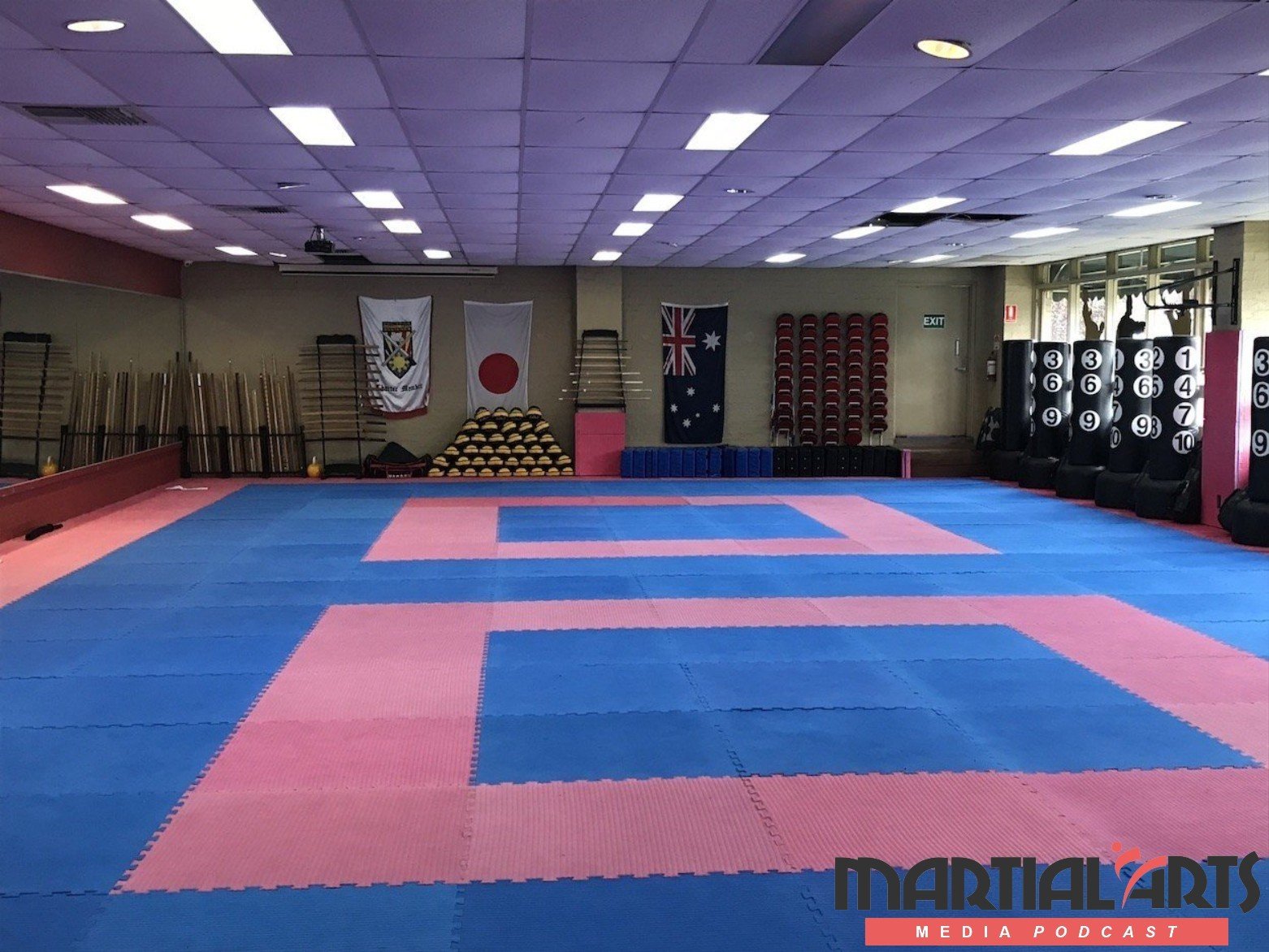


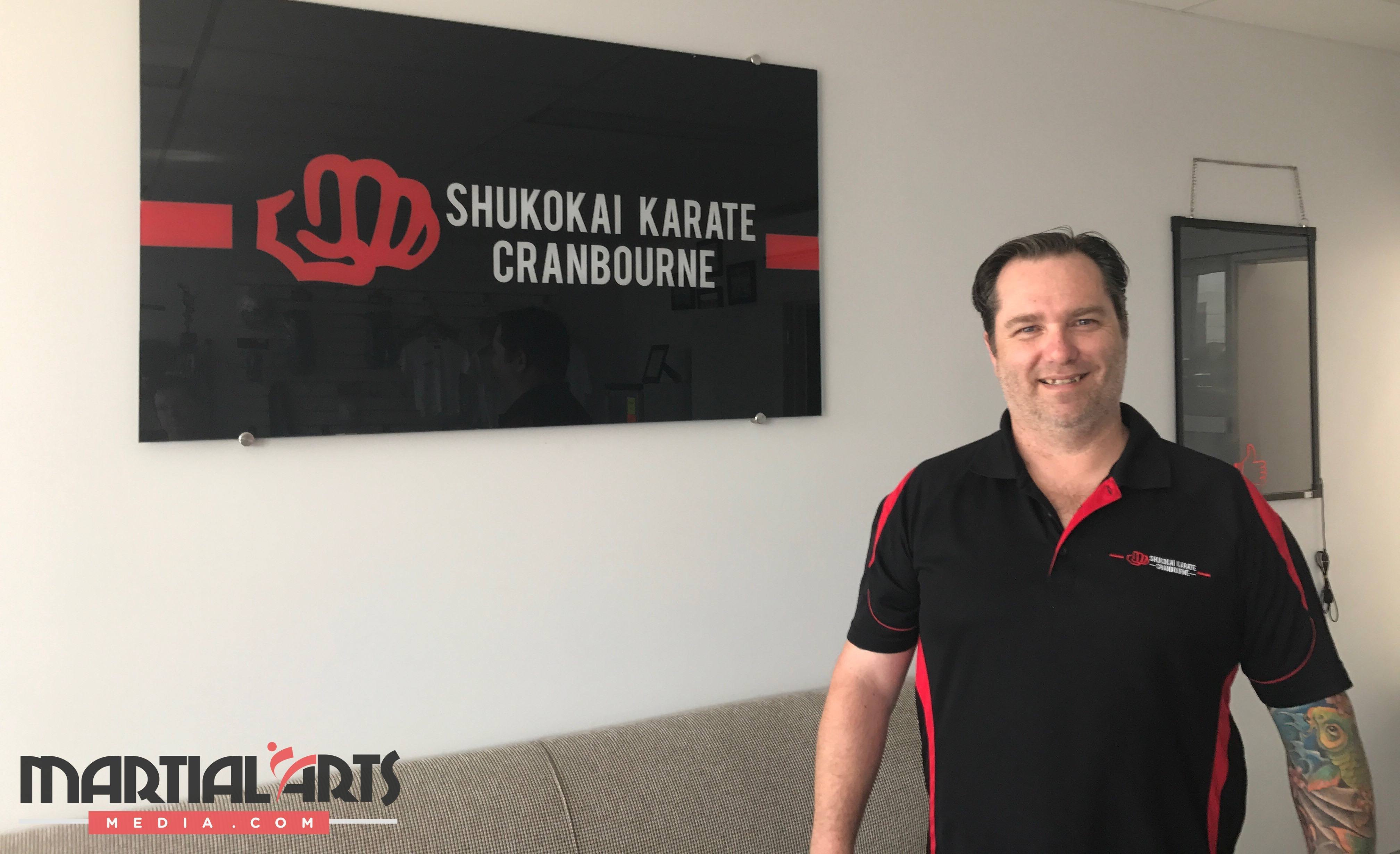 GEORGE
GEORGE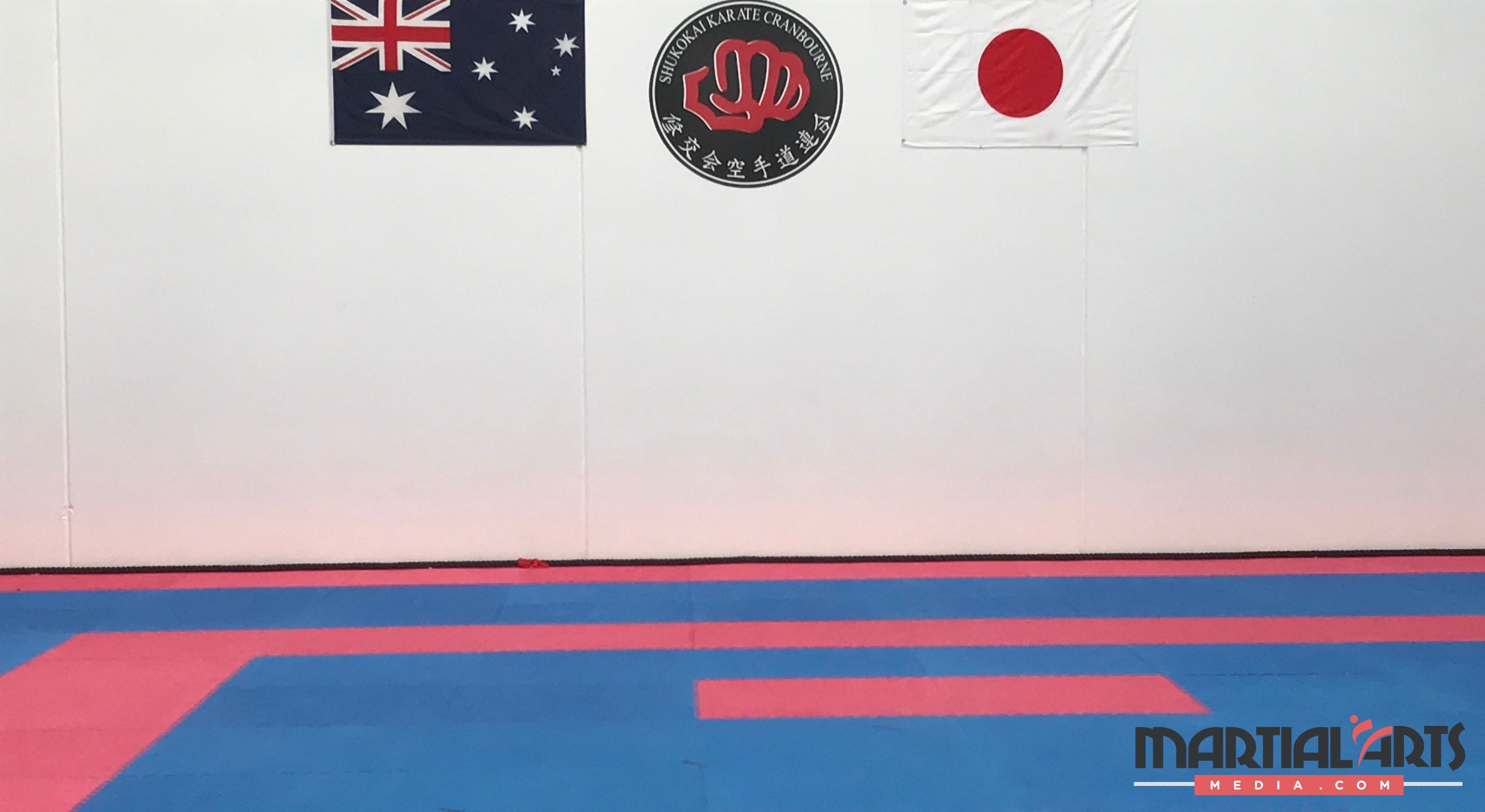 GEORGE
GEORGE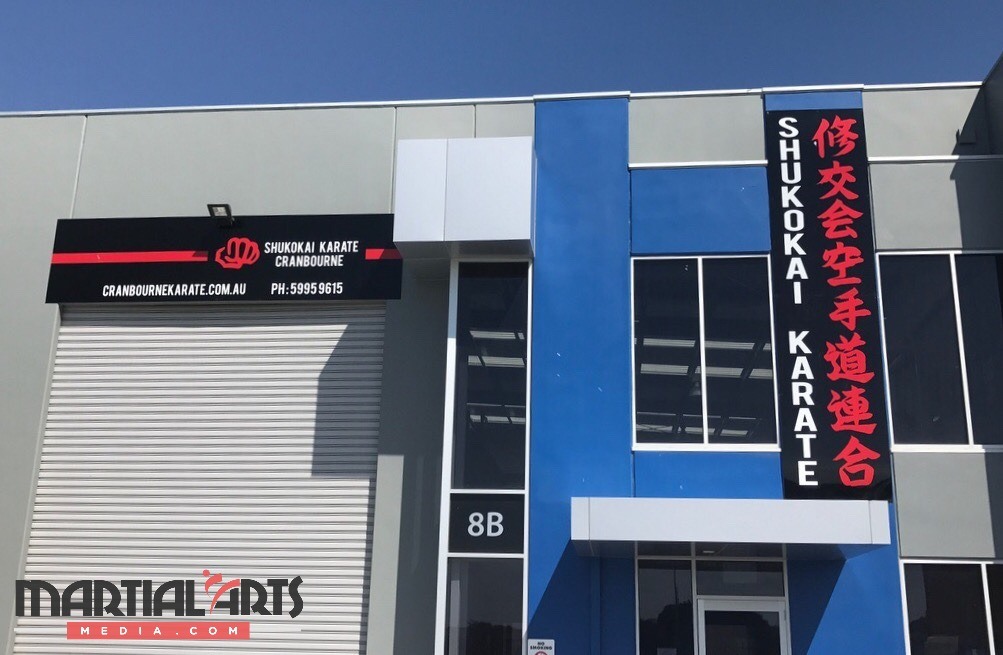 DARRYL
DARRYL
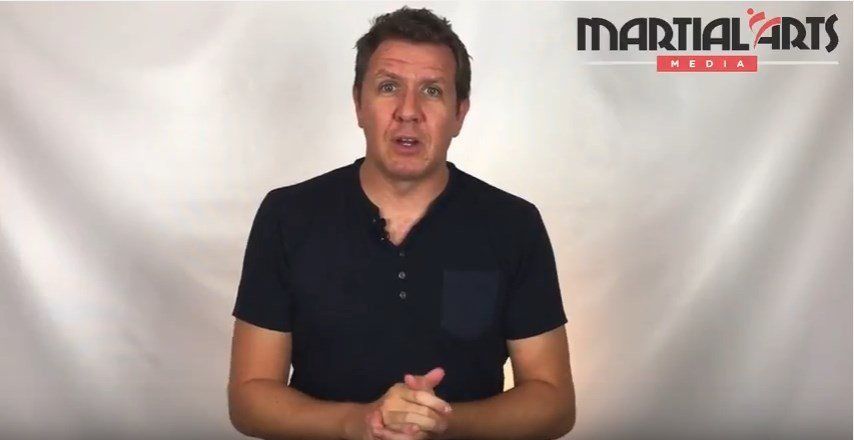
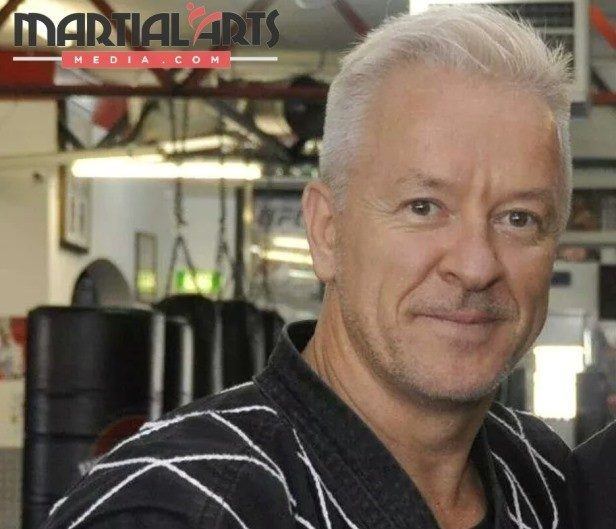

 FARI:
FARI:



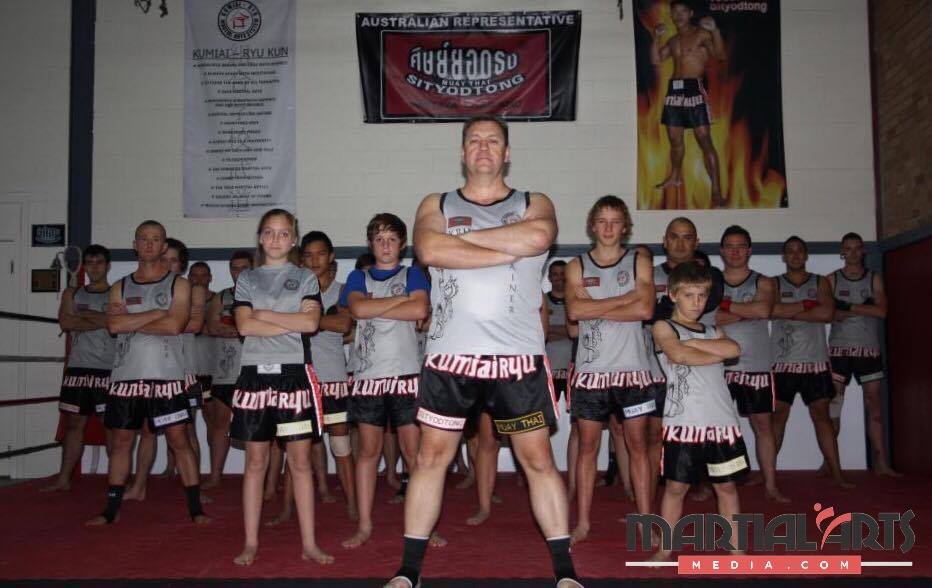
 KEVIN:
KEVIN: 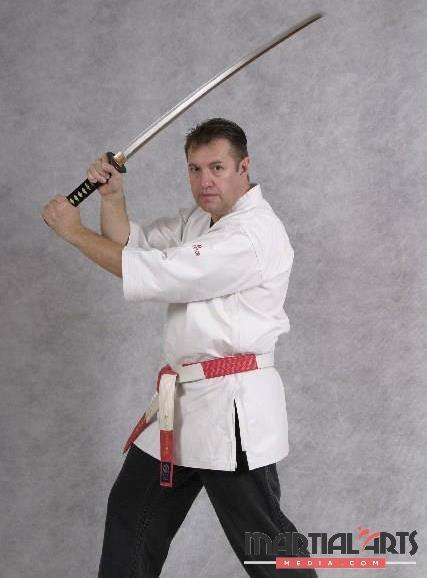 KEVIN:
KEVIN:  I've always been a firm believer in education and enhancement of martial arts instructors. I’m the senior vice president of the martial arts industry association, which provides an accreditation program. I’m also the New South Wales president of
I've always been a firm believer in education and enhancement of martial arts instructors. I’m the senior vice president of the martial arts industry association, which provides an accreditation program. I’m also the New South Wales president of  That's why it’s so important that you don't sell them anything and you make sure they fully understand the program. We talk a lot about things like there is going to be a time when you don’t feel like coming or your child won’t want to come so we have strategies to help them move past those phases. So it’s very important that people when they come to your organization, are very clear what they're getting. And don't oversell, OK? Here's a saying that's underselling, overdeliver and that's a really important thing.
That's why it’s so important that you don't sell them anything and you make sure they fully understand the program. We talk a lot about things like there is going to be a time when you don’t feel like coming or your child won’t want to come so we have strategies to help them move past those phases. So it’s very important that people when they come to your organization, are very clear what they're getting. And don't oversell, OK? Here's a saying that's underselling, overdeliver and that's a really important thing. 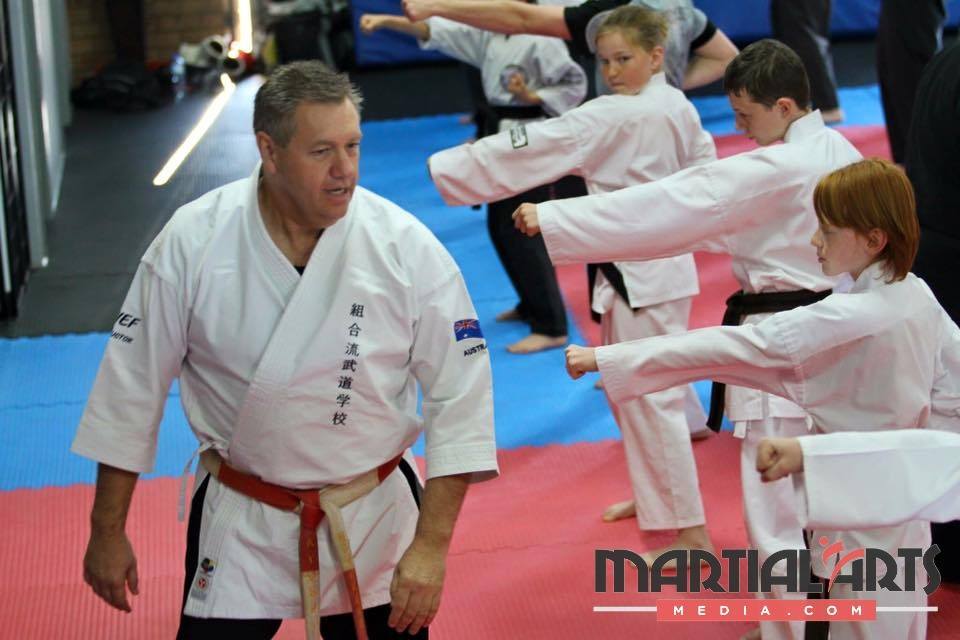 KEVIN:
KEVIN: 
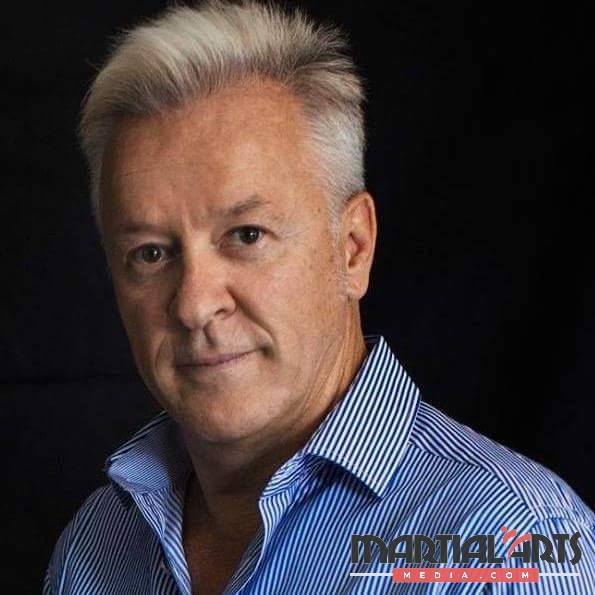 GEORGE:
GEORGE:  FARI:
FARI:  The goal is always to own your own home and have the stable income. But again, I think people are getting caught up too much with the hype and success has become different things. Ultimately, to me, it’s to be able to live a lifestyle teaching what you enjoy and not have the pressure, financial pressure to do that – to me, that's success, because you can’t beat peace of mind. I don't want to be looking at my next student as, how much money will I make. I need to get the extra student to pay my bills, or buy my next car. You know what? I want that person to join because I actually believe this will be the best thing for them. Absolutely, no doubt in the world. And if they join, I have the platform and experience of teaching that in all our centers that we share in the success. And to me, that is success. But you know, to have the pressure, the hype – I honestly find that quite, quite sickening.
The goal is always to own your own home and have the stable income. But again, I think people are getting caught up too much with the hype and success has become different things. Ultimately, to me, it’s to be able to live a lifestyle teaching what you enjoy and not have the pressure, financial pressure to do that – to me, that's success, because you can’t beat peace of mind. I don't want to be looking at my next student as, how much money will I make. I need to get the extra student to pay my bills, or buy my next car. You know what? I want that person to join because I actually believe this will be the best thing for them. Absolutely, no doubt in the world. And if they join, I have the platform and experience of teaching that in all our centers that we share in the success. And to me, that is success. But you know, to have the pressure, the hype – I honestly find that quite, quite sickening. 

